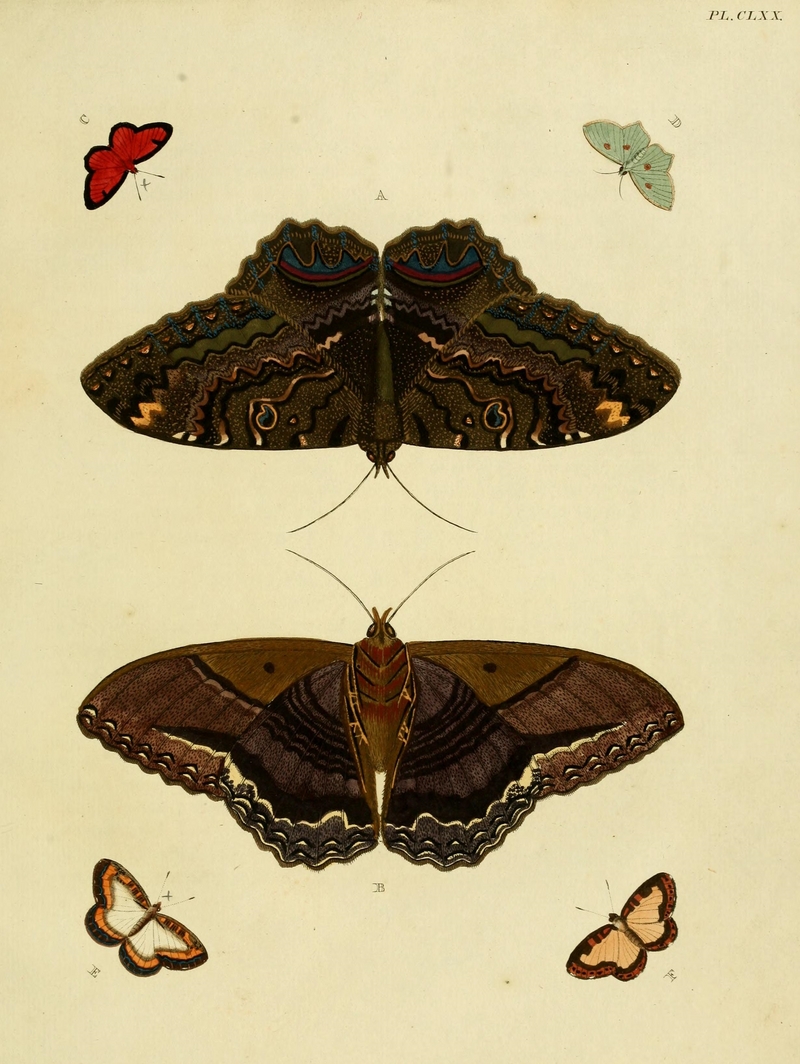Black Witch Moth (Ascalapha odorata), Mesene phareus, Hyphalia phylira, Nymphidium caricae, Thecla getus Description Plate CLXX
- A , B : "(Phalaena) Agarista" ( = Ascalapha odorata)
- C: "(Papilio) Phareus" ( = Mesene phareus, iconotype?)
- D: "(Phalaena) Phylira" ( = Hyphalia phylira)
- E: "(Papilio) Caricae" ( = Nymphidium caricae)
- F: "(Papilio) Pelops" ( = maybe Thecla getus)
Date 1779
Source Volume 2 of "De uitlandsche kapellen: voorkomende in de drie waereld-deelen Asia, Africa en America = Papillons exotiques des trois parties du monde, l'Asie, l'Afrique et l'Amérique"
Author Pieter Cramer (1721 - 1776) and Caspar Stoll (between 1725 and 1730 - 1791)
Source: https://commons.wikimedia.org/wiki/File:CramerAndStoll-uitlandsche_kapellen_vol._2-_plate_170.jpg
The black witch moth (Ascalapha odorata) is a large bat-shaped, dark-colored nocturnal moth, ranging from Brazil to the southern United States. It is the largest noctuid in the continental United States. In the folklore of many Central American cultures, it is associated with death or misfortune.
Mesene phareus is a butterfly species in the family Riodinidae present in the Neotropical ecozone.
Hyphalia phylira is a moth species in the family Geometridae erected by Jacob Hübner in 1823. It was first described by Pieter Cramer in 1777. It is found in Suriname.
Nymphidium caricae is a species in the butterfly family Riodinidae present only in the Neotropical ecozone.
Thecla getus is a butterfly species described by Fabricius in 1787. Thecla getus is part of the genus Thecla and the family Lycaenidae.
Order: Lepidoptera
Family: Erebidae; Riodinidae; Geometridae; Riodinidae; Lycaenidae
Species: Ascalapha odorata (Linnaeus, 1758); Mesene phareus (Cramer, 1777); Hyphalia phylira Cramer, 1777; Nymphidium caricae (Linnaeus, 1758); Thecla getus Fabricius 1787
